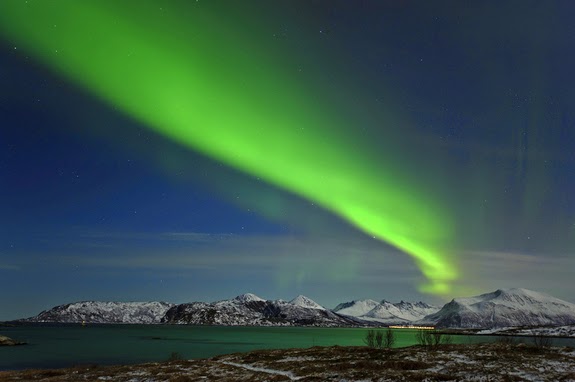With a strong background in astronomy, I recognized Iceland, where my wife and I recently visited, as a great place to observe the Northern Lights. Unfortunately the Northern Lights cannot be seen during daylight. Summers in Iceland never see full darkness. However, winter, when Iceland only has a few hours of daylight each day, is a great time to see the Northern Lights. If you ever find yourself in Iceland (or any other high latitude country) in the winter, definitely take time to observe the evening sky. It's a good bet you'll spot the Northern Lights.
A sharing of science experiences between the Cool Science Dad and his two daughters. Updates on Monday - Friday.
Monday, September 15, 2014
Iceland - Aurorae
It's probably a safe bet to say that most people on Earth never have the pleasure of seeing the Aurora Borealis (Northern Lights) or Aurora Australis (Southern Lights). An aurora occurs when a large number of solar wind particles get trapped in Earth's magnetic field lines. These particles travel along the lines until they interact with Earth's upper atmosphere. This interaction releases energy in the form of light. This is much more likely to happen near Earth's geographic poles because the magnetic poles where the field lines originate are close to the geographic poles. The larger the number of solar wind particles, the greater the chance an aurora will be observed at lower latitudes.
Subscribe to:
Post Comments (Atom)

No comments:
Post a Comment